
M: 0419 332 473
E:
T: 8648 3500
Holly McFall


M: 0459 321 020
E: hmcfall@upco.com.au


T: 8648 3500



M: 0419 332 473
E:
T: 8648 3500
Holly McFall


M: 0459 321 020
E: hmcfall@upco.com.au


T: 8648 3500

Greetings from the VPELA Young Professional Group (YPG) who bring you the ‘YPG Edition’ of the VPELA Revue!
This edition offers a ‘younger’ edge to the Revue in line with the YPG’s values. To that end, you’ll find in this edition a number of articles either authored or targeted towards young professionals. Of course, it would be remiss of us to refuse the opportunity to learn from our non-YPG members, and we are blessed with the sagely insights of our more experienced colleagues too.



The articles in this edition include a number of thought-provoking discussion pieces on the Windfall Gains Tax, offshore wind farms, the benefits of working from the office, returning from parental leave, our ongoing column ‘Asking for a Friend…’ (a place where no question will go unanswered), a satirical submission on *breaking* planning and environmental news inspired by the one and only Betoota Advocate, as well as a piece calling for a touch of bravery in planning reform. We also have a special piece written by the previous Revue editor, Bernard McNamara, who reflects on his time as the tireless editor of this very publication over a number of years.

As always, you will find articles from the Revue’s regular contributors with some worthy installments of their columns. Given the time of year, we have also included in this edition the customary coverage of the VPELA ‘Living in the 70s’ Gala, including write ups from the award winners and photos from the evening. Congratulations to all the award winners!

The YPG would also like to take the opportunity to once again call upon VPELA’s younger professionals to get involved in the variety of events and initiatives which this great organisation has to offer. So far this year, we have hosted our annual Speed Networking night, where
attendees were able to expand their networks and get to know other young professionals in the industry. We also hosted the first of our YPG Trivia nights to great fanfare. To those who thought that they would have been victorious but for the particular set of questions on the night – fear not, a second installment is already in train for the second half of the year.
The YPG is deep in the midst of organising its annual Masterclass series, with this year’s theme comprising ‘Realism vs. Utopia’. The inspiration for this year’s theme stems from what our Committee agreed was a thought that perennially ran through our heads, albeit more intensely at the start of our careers: planning is largely concerned with setting a vision and then bringing that vision to life –when it comes down to it, is planning realistic in its aspirations or is it all a bit too utopian? We have a wonderful array of hosts and panelists this year to guide us through this question over three sessions, and we cannot wait to see as many of you there as possible.
If you have ever wanted to get more involved in the YPG, remember to keep your eyes open toward the end of each year for applications to join the Committee. A number of seats on the Committee become available at the end of each year – so we strongly encourage VPELA’s young professionals to apply when the time comes. As always, do not hesitate to get in touch with anyone on the Committee should you have any questions or issues about the YPG or VPELA more generally! To conclude, we would like to thank the YPG committee of 2023, our sponsors and particularly to all those that contributed articles. On behalf of Charlie and Izzy and our assistant editing team – YPG committee members Amy, Briony, Caroline and Emily, we hope you enjoy the YPG June edition of the Revue.

What a night! I can’t begin this column without saluting our wonderful Gala Dinner in May, photos of which adorn this edition of Revue. I trust those of you who attended enjoyed our annual shindig.
Enormous thanks to our amazing VPELA organising team, led by Grace Hamilton and ably supported by Anna Aughterson and Katherine Yeo, for beaming us back to the 1970s. Deep appreciation, too, to our fabulous emcees, Kate Lyle and Hugh Smyth, and our sponsor, Villawood. And particular thanks to the Hon. Sonya Kilkenny—not only for her entertaining and informative speech, but also for getting into the spirit of the occasion and being possibly the first Minister for Planning ever to dress up for our Annual Dinner!
Congratulations to our deserving award winners announced at the event: the inimitable John Rantino, recipient of the Richard J Evans Award; Juliet Forsyth SC, Stuart McGurn and Jane Power, our Fellows for 2023; and Rechelle Brookes, winner of the Young Professional Award. The full citations for all of our award winners can be found on pages 9 – 11.
Our thoughts now turn to VPELA’s annual conference in Lorne on 31 August to 1 September. Make sure you have those dates blocked out in your calendar and keep an eye out for booking details in July.


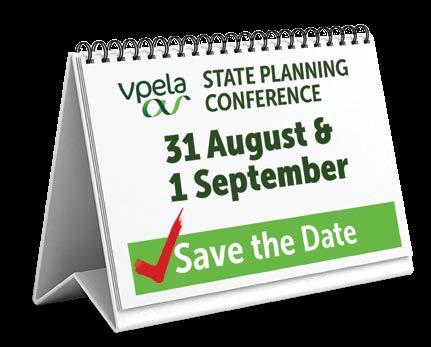
In the meantime, please enjoy this edition of Revue, coordinated by our Young Professionals Group.
In the last few months, the need for more housing in Victoria has leapt onto the front pages. The return to high rates of immigration, combined with high interest rates and construction costs, supply chain issues and failing builders point to a growing housing shortage.
What can we in the planning industry do about this?
Minister Kilkenny has reaffirmed the State government’s focus on increasing the proportion of new housing within established areas of Melbourne and regional cities and towns, as part of Plan Melbourne’s Compact Cities vision. Infrastructure Victoria’s (IV) report investigates how current demand for housing in new greenfield suburbs could be shifted to established suburbs. This research was the subject of a VPELA seminar on 18 May.
Mark Sheppard, Principal, kineticaThe IV report identifies that households on moderate incomes that would prefer to live in established areas—many of which are families and first home buyers—want to live in townhouses, villas and low-rise apartments. But we are not delivering this type of housing in sufficient volumes, and they are not affordable for moderate-income households in the vast majority of Melbourne’s inner and middle suburbs.
Our Home Choices proposes a number of strategies to provide more choice for moderate income households who might prefer to live in established suburbs. These include proactively planning for more homes in established areas near public transport and services, and increasing the diversity of new housing. The report recommends housing targets for each local government area, with incentives for them to be achieved, and the expansion of the RGZ to provide for more low-rise apartment buildings.
The reasons for a lack of affordable medium-density housing in established areas identified by the research include high urban land costs, community opposition and uncertainty around the timeframe and outcome of development assessment decisions. While there is much to be said for our performance-based planning system, is it time to examine its contribution to these factors? Some argue that it increases the cost of land through speculation. It also comes with a planning approvals process that features uncertainty, extended timelines and increased costs, partly through the rights of third parties.
The IV report proposes streamlined planning processes, particularly in urban renewal areas and through as-of-right permission for dual occupancy and townhouse development that complies with a new code. But does the extent of the housing challenge warrant a broader review of the pre-eminence of performance-based planning and Notice and Review provisions in places where medium-density housing is needed, and greater availability of code-assess pathways such as VicSmart?
We will continue to provide opportunities for our members to engage with this issue and contribute to the debate on planning reform. Mark Sheppard is President of VPELA and Principal at kinetica.

The YPG has asked me to provide a reflection on my seven years as editor of the Revue. (Yes, the YPG who showed me up with last year’s YPG edition in June 2022!)

It is inevitable that, taking on the task as editor, one brings personal and professional experiences into the approach. My professional journey has traversed planning and development, but in a broader way than some. I have worked first, in local government, then in a large architectural and planning private practice, then for 16 years as planner and development manager across Australia for a major private retail and later public corporation. Since 2007, I have operated as a Principal and owner of a planning practice, dealing across commercial and mixed-use areas. Along the way, I have been Victorian President of PIA, a Vice President of the Property Council, a Board member and Treasurer of VPELA, before taking on the editor role. A broad exposure, including some hard, and some raw professional experiences in the commercial world.
So, as editor, what did I want to achieve; and how did it go? The second question is better answered by others, but a little self-reflection may be permitted. But first, I inherited from Jane Nathan, a well-regarded publication. (First rule – Don’t ……. it up!)
In my approach, my targeted ‘table of contents’, was to include ‘Themes’, ‘Broad views’, ‘Contributions from government/agencies’, ‘Regular contributors’, ‘YPG’ and reports of Seminars, Conferences, etc. And, when topical, an edition would feature a practice area, such as infrastructure, housing, other etc.
But above all, … each edition needed to have pages and pages of PHOTOS! That was where our sociable readership went first! Jane Power’s ‘snap-happy’ camera was often ‘white-hot’ at events.
At an early point, I decided to seek articles across the range of activities, locations, and personnel. The journal needed to reflect the breadth of VPELA member interests. This self-imposed structure to chase articles across these themes, gave me confidence that within each edition, there would be appeal to our broad membership. The themes were:
McNamara,Places: stories/innovations about a particular location or projects, (e.g. Docklands, Caulfield Racecourse)
The Business: articles on professional topics, technical discussions, (e.g. Contamination, VPP changes)
People: articles that provided information on a person in the profession, or a person who interacts with development approvals (e.g. Helen Gibson, Rob Adams, Bert Dennis, others).
Seeking the outsider view on what we do: This objective was influenced by what I experienced in my previous national development manager roles, but also by what my practice was being confronted with daily. The problems in the ever-increasing, costly development assessment/approval/processes: I made a point of seeking views about the development approvals ‘industry’ from those who are subject to it, who are investors in it, or who, in other roles, are impacting on the urban and regional environment. I wanted to use these contributors to call out various wasteful and costly practises, processes and assumptions that have set in within Victoria and which hardly anyone questions. Do we really need so many assessments for the ‘uncomplicated’? (Productivity anyone?)
The VPELA membership needs to understand that the ways that we deal with these proposals often adds unnecessary costs and time. Contributions from people outside such as Anna Cronin, Michael Fox, Rob Pradolin, Brendan Condon, Brad Paddon and others provided different (‘deliverers’) perspectives.

VPELA members benefitted from the regular contributions from the agencies and organisations which are making decisions and affecting our urban and regional areas. Regular (and irregular) contributions have come from the VPA, DELWP, DV, PPV and VCAT. Many local governments also generously contributed articles that identified what was occurring in their strategic and statutory planning space. Contributions over the time came from multiple councils which I won’t list, for fear of omitting some. (And it is great to see increasing numbers of our local government colleagues at VPELA events.)
The standard edition was always built around the core articles of: The President (thanks Tamara and Mark), Reports of Seminars, Conferences, YPG activities, and contributions from the Minister for Planning Wynne and from the various Shadow Ministers for Planning.
I inherited, from editor Jane Nathan, a group of regular contributors on various topics. Many remained and I recruited others. These included Julie Rivers Davis, Henry Turnbull, Matthew Townsend, Joseph Monaghan/Tess Kerridge, Rory Costelloe, Jim Gard’ner, Phillip Martin, Marshall Day, Ecology and Heritage Partners, plus others on occasions. My great thanks for their dedication.
‘through the rear-view mirror’Bernard (past editor VPELA Revue, 2015-2022)
The unprintable: Editing a magazine/journal is not without its bumps. There were occasions where I received requests to publish articles which for differing reasons, were neither suitable, nor appropriate for the Revue. As they say…’refusal often offends’.
Seeking to avoid the ‘spin’: A different irritation/disappointment was often encountered after seeking an article from a company or a government department/agency, or a minister. My initially enthusiastic correspondent found that what the media adviser/controller would permit was either insipid, or politically promotional. My focus was always to have articles written from the practitioner’s viewpoint, rather than the organisation’s viewpoint.
The ‘muzzling’: The VPELA membership includes people of remarkable professional quality. These professionals carry an ability to speak with authority and with frankness on important issues. At times these views might reflect adversely on certain government departmental/agency regulations or practices. Unfortunately, such frankness may not be received constructively by those who ‘make or carry out the rules or procedures’. I know this because the Revue lost more than one regular contributor following articles by them that were considered a bit ‘close to the bone’ by an agency, etc. My understanding is that said agency might have suggested that opportunities for consultancy work might be affected by these public views. As business operators with staff to support, one can understand the decisions that these writers
made. That such agencies cannot stand constructive criticism is disappointing, and counter-productive to good community outcomes. It would seem that a diversity of views has become less welcome in Victoria.

The COVID challenge: There were dark days for editors in 2020-21 when events were cancelled, accompanied by a general ‘bunkering down’. Fallback was to ‘create’ articles. My thanks to contributors to ‘Five visions of post COVID world’ (June 2020), ’11 Questions to 11 professionals’ (October 2020), and ‘Regional impacts in a post COVID world’ (June 2021).
The Tragic: In the 7 years, I have included obituaries for members; some ‘expected’, but others tragic. Some of these may be seen as a natural part of the life process such as for David Whitney and Colin Barlow. Other obituaries have been tragic, or too soon. Over my time, I have included obituaries for David Turnbull, Phil Hanna, Phil Bisset, Annabelle Viner, and Jane Birmingham. I note that the March 2019 Revue was focussed on mental health.


To finish, it has been a privilege to have been entrusted with the task of preparing and providing members with the Revue. The amazing help and ‘structure’ provided by Jane Power and the VPELA Office and the graphic management from Greg Loveder made this possible.
My best wishes to Amanda Ring and Holly McFall, the 2023 editors.

We have a breadth of experience, which is built on specialised planning and environmental law knowledge since 1886. Victoria’s












The battlefield is Chapel Street, a strip of public land 2.5km long and for the most part, only 20m wide.
If active travellers prevail, the outcome could have a profound impact on Melbourne’s established urban villages.
A report just released for Stonnington Council, “Chapel Street Transformation, Insights and Opportunities” explains the misallocation of public space at the heart of this contest.

Presently, 55% of all space in Chapel Street is dedicated to vehicles, yet only 16% of visitors are drivers.
On the other hand, 54% of visitors walk, yet pedestrians are allocated only 30% of street space. And this space is shared with alfresco diners and infrastructure such as street furniture, lighting and bike parking. This misallocation of public space has serious consequences:
- Chapel Street is the most dangerous cycling route in Melbourne, with more than 250 cycling accidents in the last five years, 68% of which required hospitalisation.
- The 78 tram line is one of the poorest performing in the Melbourne network—it can take 20 to 30 minutes to travel from one end of Chapel Street to the other.
- Only 5% of Chapel Street has tree canopy cover, making Chapel Street a harsh and unwelcoming place in the summer. Council’s plan is to increase that figure to 30%.
The obvious means of reclaiming this public space is to remove the 398 free-of-charge car parking spaces from Chapel Street. This will create more space for pedestrians, DDA-compliant tram stops, street trees, and maybe a protected bicycle lane. Removing cars circulating for free parking will also improve the efficient operation of public transport.
The Chapel Street precinct will still have ample parking. On-street car parking represents less than 7% of the total precinct parking offer. During peak demand, traffic engineers estimate that half of all Council operated off-street carparking spaces remain empty.
Matthew TownsendResistance from traders is expected to be fierce. The Report notes that traders are “concerned with visitation and sales, servicing of their venues, and the perception that loss of parking will adversely affect business.”
But such fears are likely unfounded:
- the Strøget in Copenhagen, was filled with cars until its pedestrianisation in 1962. The opposition argued “no cars means no business,” but the street has been a massive retail success, and is now the city’s busiest shopping street.
- Grafton Street in Dublin was a traffic-clogged mess until it was pedestrianised in 1971. It is now Ireland’s premier and busiest shopping street.
- Rue Sainte Catherine in Bordeaux, was fully pedestrianised in 1984. At 1.2kms of length, it’s Bordeaux’s main shopping street and one of Europe’s longest.
Special permits can still be given to emergency vehicles, garbage trucks, taxis, commercial and delivery vehicles and residents with limited mobility who depend on cars.
It might not be necessary to stop vehicular movements along the whole of Chapel Street. For instance, after Acland Street, St Kilda, was closed off at Barkly Street, a Council evaluation found a 25% increase in pedestrian and footpath trading area; community satisfaction with the public space; a reduction to zero in the number of injuries to road users involving cars; and zero complaints about accessibility.
Chapel Street is emblematic of Melbourne’s shopping strips. It represents nearly 600 ground floor tenancies, totalling approximately 165,000 sqm of retail space. Chadstone, for example, has 156,000 sqm of retail area, not including circulation spaces.
If we can re-imagine Chapel Street as a street for people, rather than for cars, there are literally dozens of other urban villages around Melbourne where people may find more space to walk, ride their bikes and be entertained without having to compete with through traffic, or vehicles circulating looking for a free space
Matthew Townsend is a Melbourne barrister and resident of Stonnington townsend@vicbar.com.au


The annual ‘Meet the Minister’ event was a remarkable occasion that brought together 150 attendees from local and state government, Victorian Civil and Administrative Tribunal, barristers, lawyers, planning consultants, traffic engineers and developers and members of the Ecology and Heritage Partners team. All involved took the opportunity to hear from the new Minister for Planning, the Hon. Sonya Kilkenny, MP for Carrum.
The Minister spoke about her background in law, her position on the Board of The National Theatre and her experience working with the Kimberley Land Council in Broome and how it has influenced her approach to the role. She shared her plans for the portfolio for the next 12 months and specifically her ideas around Plan Melbourne. Her core insight into planning comes from her lived experiences, such as witnessing her mother campaigning in the 1980s. The power of voice and community action are what resonate with her and what she plans to bring to her role as Minister.
Plan Melbourne is a metropolitan planning strategy that defines the future shape of the city and state over a period of 35 years. Integrating long-term land use, infrastructure and transport planning, Plan Melbourne sets out the strategy for supporting jobs and growth, while building on Melbourne’s legacy of being a unique, vibrant and liveable city with sustainability being a key focus.
Melbourne’s population is projected to grow from 4.5 million to almost 8 million by 2051. The economy will need to adapt and grow. This growth will include 1.6 million homes in places where people want to live, 1.5 million jobs for a changing workforce, the city’s transport
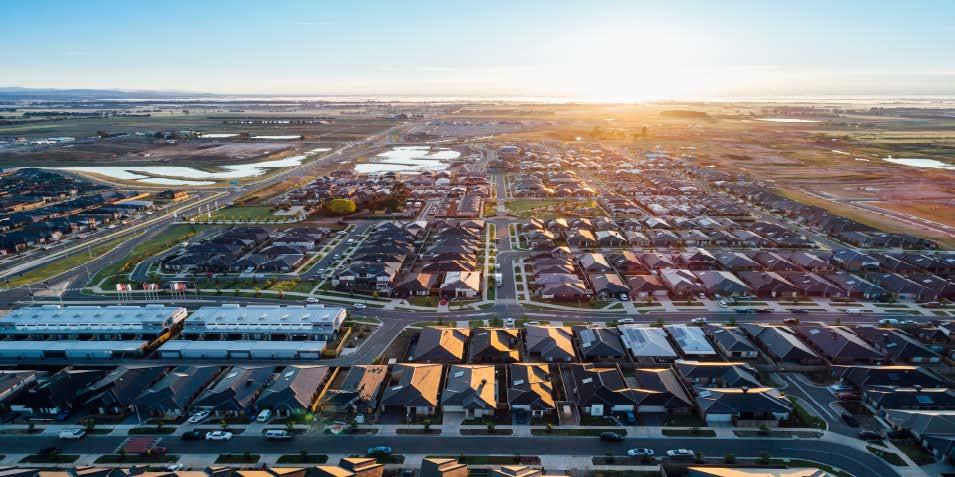
The Minister’s vision for Melbourne’s planning portfolio is that of equity, liveability and community engagement to provide a healthy and diverse range of planning opportunities for Melbourne’s present and future population. She is passionate about creating jobs for the future by increasing opportunities for education and training, transitioning to renewable energy and unlocking opportunities for women in the workforce. The Minister discussed the desired outcomes and her ideas and strategies around managing it all in a sustainable and affordable way while keeping the community included.
The Minister’s responses to both Mark Sheppard and audience questions were enthusiastic and informative, and covered several other topics, with highlights including reform to the EES processes, integration of Traditional Owner engagement during the design and planning processes, and the opportunities the new web tool, Digital Twin, will bring to community engagement and planning.
The Minister concluded by outlining her biggest future challenges to the planning portfolio. These included:
- Demystifying planning to the community.
- Achieving the 70% goal of infrastructure in existing areas.
- How can planners best engage with community during the early processes?
- Maintaining our current livable and culturally diverse landscape with the growing population of Victoria.
The opportunity to hear directly from the new Minister and to participate in the discussion is an important opportunity for all of us in the planning and environmental law sector. Ecology and Heritage Partners was proud to sponsor this event for VPELA once again, and we thank Hon. Sonya Kilkenny and VPELA President Mark Sheppard for making themselves available for the evening.
Lexie Branda-Pawlaczyk, Cultural Heritage Team Leader, oversees and manages the consulting process of the Cultural Heritage Unit. The team consists of 10-12 consultants in addition to two Team

Civil Engineering
Town Planning
Surveying
Urban Design
Landscape Architecture
Water Resources Engineering
Strata Certification
Traffic & Transport Engineering
Project Management
Environmental Consulting
John Rantino graduated from Melbourne University Law School in 1981.
After graduating he joined a small firm and shortly after moved to the then City of Broadmeadows, as its in-house lawyer for 3 years. This was the start of John’s long and satisfying relationship with Local Government that has endured for almost 45 years.
From the City of Broadmeadows he went to what was then Mallesons (now King and Wood Mallesons) where he distinguished himself as a fine administrative law practitioner and cemented his reputation as a local government and planning lawyer. While at Mallesons he worked with Ian Murray who was also one of the doyens of local government and planning law in Victoria.
After 11 years at Mallesons, John moved to Maddocks as a partner in 1999 where he continues to work today.
At Maddocks, John became firmly entrenched as one of the top local government and planning lawyers in Victoria. His reputation in planning law, including in gaming and prosecutions is an outstanding one. He has been recognised in countless practitioner surveys as an outstanding lawyer in these areas, including in recent times in two consecutive editions of the Doyle's Guide as one of a small handful of pre-eminent lawyers.
John has a strong work ethic and a reputation for diligence and detail. He is also a creative lawyer who can seemingly make an argument “out of nothing” to the delight of his clients and the surprise of his opponents.
An Austlii search of John Rantino establishes that he has done something in the order of 630 hits in VCAT and its predecessor, the AAT since 1998. To that you can add at least another 90 panel hearings. To say nothing of the large number of Magistrates Court appearances. He has contributed much to the making of new law in the jurisdiction, some few examples with which we are all familiar and include:
• Westpoint Corporation PL v Moreland CC [2005] VCAT 1049 –which defined criteria for the exercise of secondary consent;
• Hassta Holdings Pty Ltd v Maroondah CC [2007] VCAT 2445 which triggered much discussion, debate and ultimately legislative change in relation to when a public open space contribution should be made;
• Fletcher v Maroondah CC [2010] VCAT 670 which continued the public open space debate commenced in Hassta;
• Sixty-Fifth Eternity Pty Ltd v Boroondara CC [2011] VCAT 1825 on the relationship between planning controls and planning merits and a registered section 173 agreement and which went to the Supreme Court; and
• Popular Pastimes PL v Melbourne CC [2008] VCAT 1184
Despite being a formidable advocate John is always the perfect gentleman. He is always courteous, mild mannered, calm and never rude or obnoxious. Though he is never afraid to make a persuasive and compelling argument as to why a previous decision might be departed from.
Across a long career in the law, John Rantino has served the planning jurisdiction with distinction. He has dedicated his legal career to advising and representing local government bodies and government authorities such that his name is synonymous with the jurisdiction. He has many loyal clients and followers that have consistently sought his skills, guidance and judgment out for the big and most important cases and for the little things that matter. Many of the planning lawyers and barristers in this jurisdiction have worked with John at some stage and would regard him as a confidante, a mentor and a teacher.
He continues that tradition at Maddocks each week with a session he named “Ask John” inviting young lawyers to raise questions about matters that require his expertise. Unsurprisingly, it is one of the most popular training programs run in the Planning team at Maddocks. He runs wildly popular advocacy training sessions for local government council officers as well.
His expertise in planning and local government has been acknowledged by the Law Institute of Victoria in awarding him the title of Specialist lawyer in Planning, Local Government and Environmental Law which he has held now for the last 15 years.
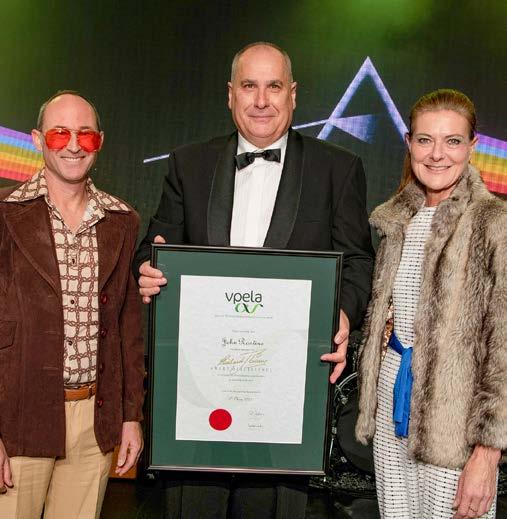
Finally, John is a person of outstanding character. Those that know him and more so, those that work with him can attest to that without reservation.
John Rantino is a most worthy recipient of the R J Evans Award.
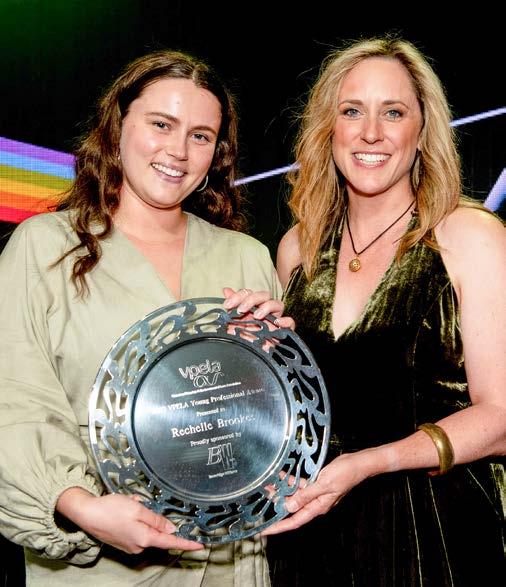
Treaty negotiations are underway in Victoria. A referendum will soon be held on a Voice to Parliament. This is a pivotal moment in Australia’s history. Built-form professions must play their part. As questions of sovereignty, land title, and political power are inherently entwined in our daily activities, we are likely to be fundamentally challenged. This is an opportunity for us to do better, to create more inclusive, just cities.
In Australia, questions around Treaty are usually put in the ‘too hard’ basket. Yet, many nations around the world have planning systems that engage with Indigenous title. Our closest neighbour, New Zealand, is one such place.
Rechelle is undertaking a study tour of New Zealand, to review the history and planning practices around Treaty, engage with professionals and community members, and witness for herself the different planning outcomes that emerge out of a collaborative, treatyaligned process.
“This is an opportunity to explore principles and understand processes that will be of relevance to my practice in Victoria. Post-colonial planning also raises questions of participatory planning, stewardship of public spaces, and inclusive cities. These are secondary flow-on topics that I may also choose to explore, if opportunity arises”.
She proposes to visit the North and South Island and Christchurch in particular. Preliminary research has revealed that since the 2011 earthquake, Christchurch has been engaging with the Māori community to reconstruct an inclusive, post-colonial city. It thus provides a contemporary example relevant to the Victorian context.
Her key objective in exploring New Zealand and connecting with industry professionals is to gain an understanding of processes, and bring back lessons on how we can do better in Victoria. It is an excellent learning opportunity that will assist in filling a gap in our collective knowledge.

Juliet has been a member of the Victorian Bar for over 20 years, and was appointed Silk in 2018. She specialises in planning, environmental, land valuation and administrative law and appears for all stakeholders in these areas, including government, developers and community groups. Outside Victoria, she has particular experience in environmental law matters in other jurisdictions including Tasmania and Queensland.
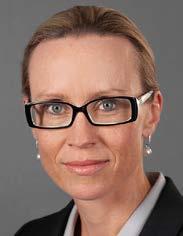
Juliet’s attention to detail and thorough preparation of cases ensures that her clients are in good hands and that her Junior’s experience is to best practice. She regularly dedicates significant time to volunteer and pro bono work, and was recently awarded the Ron Merkel KC (VicBar) Award for her outstanding achievement in acting pro bono for a landholder group in a coal mining case before the Queensland Land Court.
Her volunteer activities have extended to VPELA and its members over a significant period of time. As well as attending and presenting at past conferences and seminars, VPELA has been extremely fortunate to have Juliet, among other esteemed members of the Bar, volunteer her time to run the Moot program for the past 5 years. The VPELA Moot program is a significant annual program that gives young professionals hands-on skills and learnings to further their careers, and Juliet’s input and feedback to participants each year is always highly valued.
Jane joined VPELA as its Executive Officer in May 1999. Over the 24 years until her retirement in 2023, she was central to the success of the Association.

Jane used her outstanding organisation, management, negotiation and communication skills to establish an effective and efficient operation that underpinned the delivery of the Association’s purposes. Under Jane’s watch as Executive Officer, the Association grew from about 300 to 1200 members. Jane mentored and worked closely with 6 staff members and numerous casual event staff over the years. Under her leadership, the team organised 24 annual conferences and gala dinners, along with hundreds of seminars and events.
Jane’s prudent financial management ensured the ongoing sustainability of the Association, critical to our survival through the COVID pandemic. When COVID sent us into lockdown, Jane also led the digital transformation of the Association so that it could continue to operate and deliver events online.
For a quarter of a century, Jane was the continuous presence that ensured an effective Board, providing critical support for 6 presidents, 7 treasurers, 7 secretaries and 74 board members.
For most of our members, Jane is VPELA. She has been the heart and soul of the Association for as long as most of us can remember, notably leading the festivities at all of our social events. Jane always went out of her way to make each member of the Association feel welcome, putting them at ease with her exuberant personality and a big smile on her face.
Stuart has been practising as a town planner for over 30 years. During this time, he has made a major contribution to the planning industry in Victoria, and to VPELA.

Stuart began his career at the City of Broadmeadows, subsequently becoming head of planning at the City of Melbourne. He was a Director of Fulcrum Town Planners and a Partner at ERM before joining Urbis as a Director in 2015. Over his career, Stuart has established an outstanding reputation for integrity and the provision of expert advice and evidence.
At the City of Melbourne, Stuart was instrumental in establishing a high-performing planning team, and closer collaboration with the Department of Planning in relation to the Central City. In his various leadership roles, Stuart has actively mentored and developed countless young planners. This has included support for their membership of and participation in VPELA.
Stuart made a significant contribution to the Association as a board member from 2010 to 2013. He was involved in developing the concept for a Leadership Lecture, which ultimately became the Peter Barber Lecture. Stuart has presented at numerous conferences, seminars and YPG Masterclasses series, and mentored Young Professionals as part of the board/ buddy program.
For some the future looks bright, however we know that this not the case for everyone. How can we plan and grow our cities, regions, and communities so that all can celebrate the future that lies ahead? What role do we all play in ensuring the places and spaces that we create celebrate all? This year we will hear from many voices. It will provide everyone with an opportunity to listen and consider – what can we do to celebrate diversity and inclusion moving forward?
This year’s conference will engage and energise us all to embrace the possibilities of the future.


The program is currently being finalised and we have a great line-up of keynote speakers to inspire you including:
Grace Tame, Australian activist and advocate for survivors of sexual assault. Former Australian of the Year.
Ian Mann, Chairperson of First Nations Foundation
Will Young & Kelley Mackay of Finding Infinity
Dr Stephen Rowley, Adjunct Senior Lecturer in Monash Urban Planning and Design
Mariam Issa, Refugee Council of Victoria. Storyteller, life coach, author, a community builder and an educator
We have three fantastic panel sessions this year: Environmental
To retreat or adapt? Is it time to plan for a managed retreat away from environmental hazards or is climate resilient architecture the answer?
Access All Areas: Ramping up our approach to accessibility
We all want to create spaces that are accessible to everyone. Unfortunately, there continues to be a huge gap between what ticks the boxes, and what actually works. This panel brings together industry experts with lived experience in how our built environment caters for some and not others, with a focus on practical solutions. You’ll leave with a deeper understanding of not only the ‘why’ but the ‘how’.
We have assembled an outstanding panel of experienced and candid people within each of their respective fields. Throughout their careers they have experienced all manner of highs and lows, all manner of unique challenges. Join us to hear what they have learnt and, looking back now, what advice they would offer to those facing those unique challenges or pressures in the future.
As always we will have practical breakout sessions and great networking opportunities.
While most of our sessions are already sponsored we still have Bronze level sponsorship available which includes the following benefits:
Listed as program sponsor
Mark this must attend event in your diaries now!
Bookings open in July
Listed as sponsor on the VPELA website and in all electronic or hard copy communications
1 x Conference Registration
1 x Resort Room Single Accommodation for 2 nights (31 August & 1 September)
to discuss.


Victoria has the benefit of some of the best offshore wind resources in the world. Last year, the Victorian Government set an ambitious target of developing at least 2GW of offshore wind power: enough to power 1.5 million homes by 2032, with first power by 2028.
The Commonwealth Government has introduced a new regulatory regime for offshore renewable energy infrastructure. It outlines how and where infrastructure projects for renewable energy generation or transmission can operate, but does not displace existing Commonwealth and State environmental and planning regulatory regimes. Here, we provide a summary of the new regime along with an outline of the key environmental and planning approvals that will be required for offshore wind developments.
The Offshore Electricity Infrastructure Act 2021 (Cth) (OEI Act) and Offshore Electricity Infrastructure (Regulatory Levies) Act 2021 (Cth) commenced on 2 June 2022, followed by the Offshore Electricity Infrastructure Regulations 2022 (Cth) and Offshore Electricity Infrastructure (Regulatory Levies) Regulations 2022 (Cth), which commenced on 2 November 2022. This legislation and associated regulations provide a framework for the Minister for Climate Change and Energy (Minister) to issue various types of licences for offshore renewable energy infrastructure projects.
In summary:
• A feasibility licence allows the licence holder to assess the feasibility of a project in a particular area (up to 700 km2) for up to 7 years.
• A commercial licence allows the licence holder to carry out an offshore infrastructure project for the purpose of exploiting renewable energy resources for up to 40 years.
• A research and demonstration licence allows the licence holder to undertake short-term projects to trial and test new offshore renewable energy technologies for up to 10 years.
• A transmission licence allows the licence holder to store, transmit or convey electricity.
Feasibility licences, commercial licences, and research and demonstration licences can only be granted for areas that the Minister has declared to be suitable for offshore renewable energy infrastructure.
On 5 August 2022, the following 6 areas were identified as priority areas for assessment:
• Pacific Ocean region off the Hunter, NSW
• Pacific Ocean region off the Illawarra, NSW
• Southern Ocean region off Portland, Victoria
• Bass Strait region off Northern Tasmania
• Indian Ocean region off Perth/Bunbury, WA
• Bass Strait off Gippsland, Victoria.
The Bass Strait off Gippsland, Victoria was nominated as the first offshore wind area to be formally assessed under the OEI Act Following a public consultation process, on 19 December 2022, the Minister declared 3 zones in the Bass Strait as suitable for offshore wind energy (Gippsland Declared Area). Each of these zones is at least 10 km from shore.
Feasibility licence applications for the Gippsland Declared Area closed on 27 April 2023.
The licensing regime described above does not displace the need for proponents to obtain other statutory approvals. Some components of an offshore wind development will fall within the State’s jurisdiction, such as onshore transmission assets and port and harbour facilities to support the construction and operation of the project, while other components, including the turbines themselves, will fall within the Commonwealth’s jurisdiction (given their location more than 3 nautical miles from shore).

In addition to licences under the OEI Act, proponents should turn their mind to the need to obtain the following assessments and approvals (among others):
● Approval under the Environment Protection and Biodiversity Conservation Act 1999 (Cth) (EPBC Act) for any action that will have, or is likely to have, a significant impact on any matters of national environmental significance (MNES) (noting that the environment of the Commonwealth marine area is a MNES).
● An environmental effects statement (EES) (under the Environment Effects Act 1987 (Vic)), which provides the basis for statutory decision-makers to make decisions about whether a project with potentially significant environmental effects should proceed.
● A planning permit or planning scheme amendment under the Planning and Environment Act 1987 (Vic) which allows the use and development of land and removal of native vegetation for any on-shore components.
● Consent under the Marine and Coastal Act 2018 (Vic) for works on marine and coastal Crown land.
● A cultural heritage management plan approved under the Aboriginal Heritage Act 2006 (Vic).
Where State and Commonwealth environmental approvals are required for a project, it is common for Victorian projects to be assessed under the bilateral agreement between the Victorian and Commonwealth governments (Bilateral Agreement). Assessment under the Bilateral Agreement reduces duplication, as the Minister assessing the project under the EPBC Act uses a Victorian process (such as the EES process) to inform their decision on the impacts of the relevant action. However, where part of a project is located outside
Victoria (for example, where turbines are located in Commonwealth waters), the Commonwealth cannot accredit the EES process as the sole means for assessing a project under the EPBC Act. This means that the Commonwealth will need to determine its own method of assessment under the EPBC Act and run an assessment process that is separate to the Victorian assessment process.
The Victorian and Commonwealth governments have committed to coordinate their regulatory processes to support the rapid development of the Victorian offshore wind industry. Nevertheless, proponents will need to consider their approvals strategy carefully to ensure that they are using resources efficiently while responding to the requirements of each decision-maker to reduce their approvals risk.

Florence Riviere leads the Land, Planning and Environment team at PwC Legal, specialising in strategic and legal issues associated with major infrastructure projects. Please contact Florence on 0407 440 363 if you have any questions or would like further information about the process.

Our planning and environment team has market-leading expertise across a broad range of industry areas, including property development, transport, construction, energy, waste and recycling and social infrastructure. We act for State government, local Councils, statutory authorities and the private sector. Our full service firm enables you, your projects and your communities to thrive.
Meg Lee – Partner
M +61 404 070 549
meg.lee@hallandwilcox.com.au


Natalie Bannister – Partner
M +61 409 418 259 natalie.bannister@hallandwilcox.com.au
Stan Kondilios – Partner

M +61 416 121 961
stan.kondilios@hallandwilcox.com.au
Rory O’Connor – Partner
M +61 400 436 175 rory.oconnor@hallandwilcox.com.au




Brendan Tobin – Partner

M +61 404 095 563 brendan.tobin@hallandwilcox.com.au

For young professionals, working from home seems to have become an idyllic way of the future. Flexible work. Flexible hours. Longer sleeps. Cuddles with the pets. Trackies and hoodies. Peace and quiet. No one around.
But what if we need interaction? What if we need to be around our colleagues? What if it was preferable to be in a busy environment where project talk was ever-present and you could absorb background information? What kind of workplace culture is being fostered when employees prefer to work from home?
Don’t get me wrong. Being able to go to an appointment, being present for an important occasion, being a parent or caregiver or staying home when you don’t feel 100% is important. But this should be built up on trust and an acknowledgement that family, mental health and personal wellbeing are paramount.
What surprises me, however, is according to ABS data collected for ‘Business Conditions and Sentiments’, as of June 2022 only 20-30% of businesses were intending on reducing their future teleworking resources.

If we’re choosing to let our team members work from home for no reason other than comfort, then at what point are we held responsible for the environment we create and the comfort we purvey within the workplace? Have we perhaps strayed too far the other direction?
Every Sunday night I’m like everyone else. “Weekend over already? Another bloody busy week ahead...” But what comes after that isn’t resentment. It’s excitement that I get to spend another week with my second family. I’m actually excited to get into the office and see my colleagues, catch up on news and get stuck into some juicy projects that need collaboration and in-person problem solving.
Our office is constantly buzzing. People running around to other people’s desks. Two, three or even four engineers discussing a contentious issue or solving a difficult aspect of a report or design. Getting pulled into a conversation to add my two cents. The vibe is infectious. It drives me to be better. I’m invigorated by the energy of a full office with discussion and banter flinging between desks.
James Aloi, Traffic Engineer, WGA
Through the pandemic as a Graduate Engineer, I felt drained having my camera on and seeing my stupid face staring back at me. March 2021 – “Team, we need to have our cameras on at all times”. By April 2021 my work consisted of talking to sets of initials in coloured circles.
The disconnect at times was unbearable. The anxiety of calling someone and not knowing what they were doing or if they wanted to be interrupted sucked. More often than not I guessed and fumbled my way through tasks rather than calling and asking. It just felt useless attempting to call. More than that, I didn’t feel like I was being kept to a standard. I was left to my own devices.
Out of sight, out of mind.
This feeling of burnout was an issue that was highlighted through the course of the pandemic’s first year, where multiple research and survey sources recorded large increases in feeling burnt out, particularly amongst younger students and professionals.
Source: Indeed, Employee Burnout Report, Kristy Threlkeld (Mar 2021)
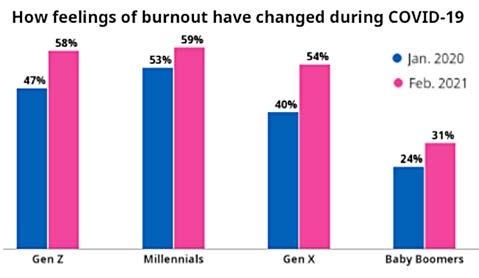
Now, some of the largest and most profitable businesses in the world such as Google, Twitter and Apple are enforcing a minimum threeday in-the-office policy that will act as the first step to enforcing full-time office work arrangements. Infamously, Elon Musk sent a memo to all Tesla employees asking them to return to the office or “pretend to work somewhere else”. Whilst that is quite a sweeping and generalised statement, it shouldn’t be completely ignored.
Prior to the pandemic, a Harvard Business Review study surveyed 1,100 part-time and full-time working from home employees where, overwhelmingly, they felt that they were being left behind by their employer, conflicts were dragged on and their voices weren’t heard.

From the survey, positive skills identified for productive working relationships were:
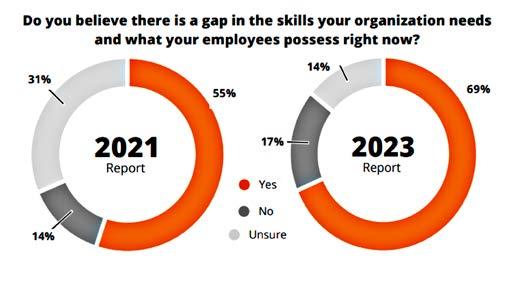
• Checking in frequently and consistently.
• Using face-to-face contact.
• Demonstrating exemplary communication skills.
• Being available.
• Prioritising relationships.
These skills, whilst being highlighted for online work, naturally occur or are subconsciously achieved within an office environment.
The workforce as a whole faces a crossroads with the new generation of employees in the post-pandemic world. There is a skill gap, particularly in young professionals, currently being created between those who have and haven’t worked in the office. Research undertaken by Wiley as part of their Closing the Gap report suggests that in 2023 69% of human resource professionals surveyed felt that their organisations had identified skill gaps in their employees. This is an increase from data collected in 2021.

In my opinion, the increase in skill gap could be attributed to the lack of passive learning experienced when working from home. If you’re in the office you’re constantly hearing discussions regarding multiple projects. I find that I’m always picking up new things just by listening in and being aware of what is being done on other projects. Particularly in Traffic Engineering, there are so many nuances that can slip by, and I’ve found that overhearing techniques and decisions being implemented in projects I’m not even involved in has been a massive help with my own decision making. If I willingly work at home, I’m doing myself a disadvantage.
More than that, my team have formed an identity and culture that has started to be recognised by not only other disciplines in the office, but also our clients and our peers. This is because we prioritise being in at work and balance working from home needs, from our senior leadership through to our undergraduates. We make work a comfortable environment where both active and passive learning is advocated. We learn and work as a cohesive and present team.
Next time you wake up and feel like you could do with working from home, I encourage you to think about your motivation to do so, because maybe working from home may not be as fulfilling as you want it to be, and you may not be getting the results you desire or deserve. You may be able to work from home, but more importantly you can build your career in the office.
James is a Traffic Engineer at WGA and a member of the VPELA YPG Committee.




An incredible 964 VPELA members and industry colleagues attended our Living in the 70’s Annual Dinner on 5 May at Crown Palladium. This was our biggest Gala Dinner ever and it was great to see so many guests take up the theme.

While we’ve given a special mention to Marshall Day Acoustics for their Space Invaders outfits (they hadn’t thought through how they were going to eat in these before choosing them!), the table with the most outstanding costume award of the night goes to the gang at Cogency. You could easily be mistaken for thinking that the photo of their group was actually taken in the 70’s! While they all individually went to great effort, the overall effect was totally groovy man! Cogency can look forward to sharing their prize of a gourmet food and drink hamper. Individual winners were Adrian Peggie from Whiteman Property, Anthony McBride from Maribyrnong City Council, Brett Young from Ratio, Luisiana Paganelli from the City of Ballarat, Oona Nicolson from Ecology and Heritage Partners, Patrick Doyle from TP Legal, Phoenix Cheung from Maribyrnong City Council, Leo Liemesak from Planned Resources, Terri Landouris from KLM Spatial, Zac Cvitkovic (pictured with the Aecom Team).

The dinner was a huge success, with significant representation from a large number of municipalities, as well as state government and consultants. It was great to have the Planning Minister, The Hon Sonya Kilkenny MP, welcome our members and we loved that she embraced the theme.
We would like to thank our major sponsor Villawood Property Group for their continued support of the dinner. Villawood have been the major sponsor of this event for many years and without this sponsorship, and that of our table sponsors, it would not be possible to stage this event. Let’s see if we can break the record again next year for this event. In the meantime you’ll just have to wait to see what our theme will be next year!
 Anna Aughterson VPELA Executive Officer
Anna Aughterson VPELA Executive Officer




thank you to all our sponsors
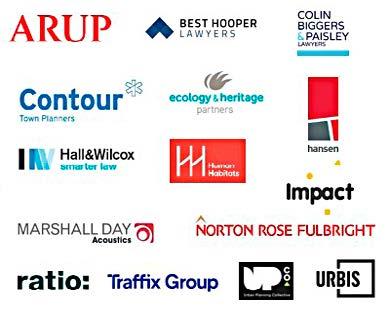 Anthony McBride
Russell Locke and Leo Liemesak Oona Nicolson
Patrick Doyle Luisiana Paganelli
Zac Cvitkovic – Freddie Mercury, with the Aecom team
Terri Landouris
Brett Young with Hillary Marshall
Phoenix Cheung
Anthony McBride
Russell Locke and Leo Liemesak Oona Nicolson
Patrick Doyle Luisiana Paganelli
Zac Cvitkovic – Freddie Mercury, with the Aecom team
Terri Landouris
Brett Young with Hillary Marshall
Phoenix Cheung


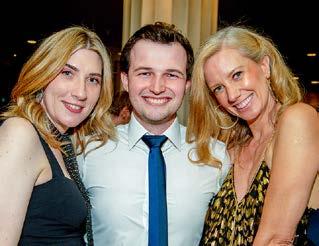


































*not real
In breaking news, Utopia Hills Council is shaking up its privacy protocols for all paperwork relating to planning applications. The Council recently resolved to go it alone in its efforts to revive the ancient notion of commonsense.

The Advocate understands that objectors will no longer be able to hide behind the thick black lines that give them a licence to ‘go for broke’. With the new changes to protocols, Utopia Hills Council will be allowing permit applicants the opportunity to once again properly consider and respond to objector concerns. The resolution facilitates the bleeding obvious, really!
When the Council struck this blow, we asked those present for feedback on the bold move. Here’s what they had to say:
Sarah, an experienced planning consultant of 15 years noted, ‘It’s great news! We no longer need to guess which of the 20 windows facing our client’s development will actually be overlooked.’
‘It’s time they (objectors) finally put their name and address where their mouth is’, stated Michael, owner of the Utopia Pub ‘Trust me, we will be making sure our pub is fully booked when those objectors turn up for pot and parma night.’

Hyacinth, who resides in treelined Bayview Road seemed fairly disheartened by the move saying ‘Hmmm… well, I don’t think transparency is very fair. It might be a victory for common sense, but it’s a blow to my sense of entitlement. I’ve come to enjoy the fact that I can object to dreadful looking extensions (located four blocks away) and they have absolutely no idea it was me!’

Working from home (WFH) has become a vital part of some employees’ day to day working life since the COVID-19 Pandemic hit in early 2020. Whilst some think it is here to stay, others aren’t so sure, with
many employers reviewing whether they will continue supporting it, especially if the economy continues to soften. We visited the engine room of Utopia Hills – the room that these days is only ever half full – to interview those that provide the jobs, and those that do them. Here’s what they had to say on the potential roll-back of WFH:
There is NO WAY I will work anywhere that doesn’t let me work from home. I love being able to watch TV and work at the same time, and sleep until 8.59am… and even if I sleep in, no one actually knows!
Commentators are observing that WFH is all about the worker at home, and no-one else! Most of us work for reasons which are obvious, but rarely considered is the fact that we also work to contribute to and underpin the economy and the community it supports. So, I think we would all do well to think just a little less about ourselves and a little more about the community of which we are part. Further, employees with ambition are starting to recognise the Power of Proximity (POP). Want to be noticed? Consider the value of being in full sight.
Janice happened to overhear her boss, Karen’s comment while working her one day in the office. She responded with quoting lyrics of Taylor Swift ‘you need to calm down’… It’s unclear if Janice is still employed by Karen.



I don’t see what the big deal is with WFH. So what if I play golf all day and write my reports at midnight? I still get my work done!
Enough is enough. Without the Gen Z’s and Y’s in the office, who will create hyperlinks in emails for me? Increase the font size on my phone? Turn off notifications on teams? PDF a word document?

Illegal tree felling will be further considered at the next Council Meeting after local residents in Utopia Park are getting caught out on being ‘creative’.
The current Council-imposed fine for illegally felling a tree without a permit is $5,000. The quantum of the fine is peanuts when compared with the financial benefit attributable to a site’s redevelopment potential.
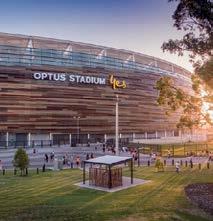
Tree felling is back on the agenda because Council employees recently noticed a sign located on a local resident’s fence announcing: ‘FREE FIREWOOD… YOU JUST GOTTA CUT DOWN MY TREE!’
Councillors were outraged by the shameless encouragement, with the Mayor quick to say ‘We are in the midst of a climate emergency; we need to retain ALL our trees,’ while conveniently forgetting that Council only recently took the backhoe and chainsaw to thirty 100-year-old trees in an effort to control hay fever among voters.

The notorious local homeowner was frustrated with the Council’s local law protecting their tree and wanted to take things into their own hands. Commenting in defense of their actions, they were quick to point out ‘Well, if it’s not me who is physically cutting it down, I can’t get in trouble! They better watch out for me and my chainsaw when the next storm hits.’
• Environmental impact assessment


• Architectural acoustics


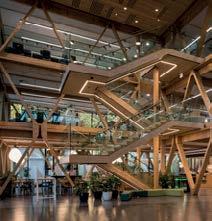
• Mechanical services noise control
• Noise & vibration monitoring

• Room acoustics
• Industrial noise assessment
• Underwater noise modelling & assessment
Threatened older staff member gets nervous around new student employee who understands clause 58 better than they do
‘Okay, Mr. Know-it-all, no one likes a show off’.Isobell Vescovi is an Associate Town Planner at Urban Planning Collective (UPco). She is Co-convenor of the YPG.

Returning to work after parental leave can be a challenging milestone for working parents. It’s important to regain your routine and financial stability but sometimes it can be overwhelming to be able to commit enough time to your role in addition to doing the childcare drop off/ pickups and still have your full energy everywhere. This article dives into challenges faced by every individual when returning to their professional lives after an extended parental leave.
Amy Najarialamouti, Urban Designer at Taylors and YPG Committee Member
parties and sport right? At least that’s what my kids think. I love my job, I love my kids, I love my family, and yet one should not exceed to the detriment of the other, and honestly when you return to work after having a child something will suffer, through no fault of your own, whether that be a clean house, family holidays, days out, or dry clothes.
Transition to Professional Environment: while in parental leave, you might have an amazing time with your newborn baby but always there is something in the back of your mind – where will I be placed within the team when I return? Being able to commit enough time to the role in addition to the parenthood responsibilities can be overwhelming. People are happy to come back and feel normal. For some people they might feel a bit uncertain of who they are as they changed a lot. A lot has changed during parental leave and you’re very much out of the loop in the workplace. When returning to work you just try to fit back in and you might feel out of place as everyone is doing their normal business, but you are reconciling a new combination in your world.
When you come back, it’s not like you are coming back from a holiday. You’re a different person with a lot of responsibilities in your life. You've got a lot going on in your mind thinking about your kid if they’re sick or well … and then to be high energy everywhere is very difficult.
Workplace support and policies: Most workplaces seem to be flexible regarding working arrangements – flexible working arrangements, part-time, and work from home. COVID has shown us that workplaces can be resilient and able to accommodate people’s life needs. Not only women, men as well. They can be productive and contribute well to their workplace and their own personal and professional development without parenthood being a burden.
Mental Load: The mental load is astounding, and usually this is the most daunting thing. This is the time that parents struggle to keep balance between, work and family responsibilities. Specially for those who return to work on a part-time basis and try to get things done in 2-3 days and roll into days that you’re generally not meant to work. At work you have to be on top of your projects and matters, need to know next steps, contacts, important dates and then you walk out the door at the end of the work day (usually before anyone else because you have to get your child before the childcare centre closes and you’re overcharged) but your day never ends, you then have kids homework, presentations, sport, excursions to pay for, clothes to clean and dinner to make and then finally you collapse in a heap, ready to do it all again. Most of the mothers mentioned that leaving work was ok, coming to work was ok, it was the mental load that overtook them when they left work at the end of each day.
Self care: You constantly want to be there and present for your child, but also you need a life too and having a career is good – you need to be your own person and it’s hard to get your own real me time as a working parent. When does that happen? Weekends are for kids’
Final message: The fact is that nobody prepares you for parenthood. Nobody prepares you for the fact that you can slip back in, but you find that it’s not very fulfilling for you because you’re not there every day so you’re not part of all the conversations and you’re not sitting at the lunch table. You’re missing out on jokes, the Friday drinks and lunch, or other special things. You feel sort of disconnected because your routine has changed. No one tells you what it will actually be like to come back from extended leave after having a baby.
It’s important especially for mothers to think about what their emotional needs are for their bonding with their children in the early days. You must have a very honest conversation with yourself about what’s going to work for you, your child, your bond and the welfare of both of you.
Just remember, every parent’s journey is unique, and it’s essential to find what works best for you and your family.
We would also like thank contributions made to this article by Kellie Burns, Senior Associate, and Anna Kennedy, Associate from UPco, and Ella Simmons, Senior Associate, and Lucy Wilcox, Lawyer, from Hall & Wilcox.


I had the pleasure, earlier this year, to facilitate an online VPELA seminar looking into the Victorian Governments’ Future Homes pilot project; a joint initiative between the Department of Transport and Planning (DTP) and the Office of the Victorian Government Architect (OVGA).
Future Homes is aimed at delivering a new generation of apartment projects to Melburnians through ready-made designs. Through my research, I learnt that the Future Homes project may be more accurately described as a “re-generation” concept. This is because acquiring readymade exemplar designs while working within a limited budget is not a new concept. Its genesis can be tracked back to the Royal Victorian Institute of Architects Small Homes Service (SHS) which was led to prominence by Robin Boyd through the late 1940’s to 1970’s.
In an article by Rory Hyde on 19 June 2018 within ArchitectureAU, Hyde wrote of the SHS:

“Boyd set up the SHS within the building of the State Electricity Commission of Victoria at 238 Flinders Street, Melbourne, where he managed a small team of architects and draftspeople. Each week, they would produce a design for a modern home, which would be published
Damian Illes, Director, Hansen Partnership
in The Age newspaper alongside a column by Boyd advocating for modern design and the new ways of living it enabled. The designs were characterised by an economic use of space, good solar orientation and maximised living space, and made use of the whole suburban block as a total environment. Small details, such as having separate rooms for the shower and toilet, allowed the bathroom to become more flexible. In essence, it was about “doing a lot better with less.” Plans and specifications of these houses could be bought direct from the service for the modest fee of five pounds, ready to be built by a local builder on a plot in the new subdivisions. It had an immense positive impact, with some 5,000 homes built directly from SHS plans, an estimated 15 percent of homes in Victoria at the time and placed the idea of good design in the public consciousness.
So, with all the ongoing challenges associated with housing supply and affordability to meet forecast population growth, it is certainly timely we revisit how to “service” accessible, ready-made plans to achieve exemplar housing designs for our current housing needs.
In many ways, the Future Homes project is the contemporary successor of the Small Homes Service of our post-war housing period. Rather than the delivery of free-standing housing, its focus
and commitment is to deliver medium density housing. It is again a design-led initiative, originally announced by Premier Daniel Andrews via a design competition in March 2021, where winning proposals were those that prioritised design, sustainability, and liveability.
All Future Homes designs have been costed and are available for purchase for $15,000.00 (ex GST) (admittedly a larger outlay than the five pounds under the SHS). This fee covers a full package of apartment plans (with 3 different base layout options), site plan including landscaping, sections, and material schedule. An added incentive for purchasing the plans, is the benefit of accessing a streamlined planning process for Future Homes approved designs.
application requirements circle back to exemplar designs approved under the Future Homes project.
There is also a question on the merit of exempting review and appeal rights yet maintaining the requirement to undertake public notice. What happens with objections and how does the community participate in the process? Will the current approach under Clause 51.06 not serve to frustrate the parties and contribute delays to the process? How does Council mediate between the community’s protection on neighbourhood character and the housing needs of its future community?
Upon reflection, it might be that there are opportunities under VicSmart or VicSmart Plus to improve on the pilot. To that end, I would suggest a focus on the following would be recommended:
1. Recognise Future Homes within Victorian Planning Schemes zoning ordinance purpose and definition.
2. Design a tighter, code-assessable planning approvals framework that avoids duplication with other provisions (such as ResCode and BADs).
3. Ensure compliant designs are exempt from public notice and specify this clearly within the applicable General Residential Zone.
As the project is still within its pilot phase, only Maribyrnong City Council is currently able to accept the Future Homes streamlined planning process. It can be found through Clause 51.06 and its associated Schedule within the Maribyrnong Planning Scheme. These provisions were implemented via Ministerial Amendment VC224 in late October 2022 and structured around:
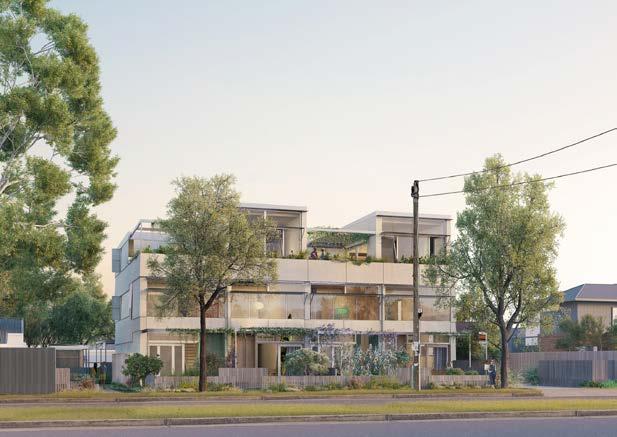
• Clear purpose to facilitate apartment developments approved under the Future Homes project.

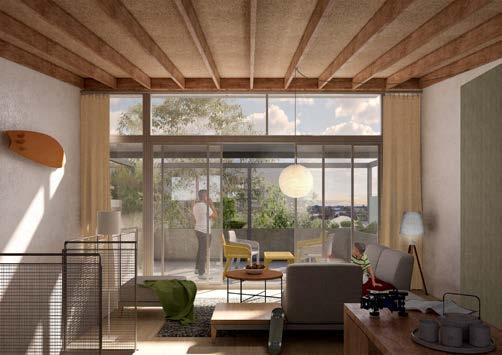
• Clarity in their application to be limited to the General Residential Zone as well as other parameters.
• Mandatory referral requirements and timeframes.
• Exemptions from specific planning scheme requirements.
• Exemptions from appeal and VCAT review.
• A series of development standards relating to; car parking, bicycle parking, communal open space, ESD, accessibility, building entry and circulation, storage, functional layout, room depth, windows, natural ventilation, deep soil, and canopy cover.
• Decision guidelines.
While much of the framework is clear and functional, there is a questionable benefit of listing development standards that appear to replicate some of those within Clause 55.07 and Clause 58 when
4. Prescribe assessment within the VicSmart (10 days) period. These opportunities could be contemplated in a phase 2 rollout beyond the initial pilot. They may be necessary to ensure greater uptake and participation in the project and they should be focused on the required incentives to reduce time and costs that could ultimately change perceptions of housing in this country.
Despite these suggestions, well done to The Department of Transport and Planning, its project partners and the Office of the Victorian Government Architect for getting the Future Homes project to pilot phase. The approved designs by the practices and studios exhibit excellent solutions to the design of better and more liveable medium density housing.
While much work has been done, some refinement to better streamline and incentivise the project should be considered when reviewing the current pilot phase. I will otherwise look forward to supporting the Future Homes project and hope it has the success and duration of the Small Homes Service to deliver apartments that are affordable, adaptable, sustainable and provide great homes, great neighbours, and great citizens – as this is indeed the standard of housing that existing and future Victorians richly deserve.
Damian Illes is a town planner with 25 years’ professional experience across the local government and private sectors. He is a current VPELA Board member.

On 18 May 2023, VPELA welcomed its members to a panel discussion on the Infrastructure Victoria’s Report – Our Home Choices: Refocussing Victoria’s Growth (Report).
The panel discussion was chaired by Mia Zar – Principal Town Planner at Tract and led by guest panellists, Dr Allison Stewart – Deputy CEO of Infrastructure Victoria, Georgia Willis – Head of Property of Moonee Valley Racing Club and Paul Shipp – Director of Urban Enterprise.
The Report explores the ways in which people make the housing choices that they do. Infrastructure Victoria approached this topic with a desire to understand how we can go about influencing these choices in order to encourage a shift towards infill development over Greenfield sites. This is likely to address huge costs and associated inefficiencies of delivering infrastructure in Greenfield areas.

The Report found that Greenfield development is making up the majority of new homes in Victoria, with in-fill housing accounting for just 44% of all new housing stock in 2021 compared with over 60% in 2016. This means that Victoria is falling well below the 70/30 Plan Melbourne target which requires 1 million new dwellings to be delivered in established areas by 2050 to accommodate Melbourne’s projected population growth.
The Report aligns with the position of Planning Minister The Hon Sonya Kilkenny MP, who has recently outlined her intent to refocus Victoria’s growth to infill areas to reflect the 70/30 aspiration identified in Plan Melbourne.
For many years, there has been much discussion and commentary on how to address the “missing middle” through interventions in the planning process as well as initiatives like Future Homes. The findings of the Report make it clear that time is now ripe for government to consider the ten policy options put forward in the Report in order to influence the delivery of more in-fill development to market, particularly given the current housing crisis in Victoria.
Dr Allison Stewart opened the panel discussion by providing the background and basis to the Report. She explained that Infrastructure Victoria wanted to understand the underlying drivers of Greenfield demand for moderate income households (who make up more than 90% of current home purchasers in Greenfield areas) and whether that demand could be satisfied by other homes in different locations. Over the course of 18 months, Infrastructure Victoria conducted focus groups, completed a price modelling study and a choice model to gain an understanding of the different trade-offs people would make between housing types in infill and greenfield areas.
With the Report focussing on the choices made by moderate income households, all ten policy options aim to provide reform so that people have greater options and can choose differently when it comes to housing.
The Report identifies three policy option sets.
Sophia Michailides, Asscociate, Gadens1. The first policy set, Options 1-4, seeks to reduce price disincentives to buying homes in established areas and identifies four different options to do this.
2. The second set of reform options proposed, Options 5-7, broadly seek to build more homes in established areas near transport and services including streamlining approvals in urban renewal precincts and expanding the use of the Residential Growth Zone.
3. And, the third policy set seeks to increase the diversity of new homes in established suburbs including a dual occupancy and townhouse code and encouraging child-friendly design in new apartments (Options 8-10).
All 10 options can be viewed at this link: https://www. infrastructurevictoria.com.au/project/our-home-choices/
The panel explored those options and how they can play out. The panellists were very candid in their views about how we can influence Melbourne’s housing growth and get Melbourne on track to meeting our infill housing aspirations and bring this stock to market much more quickly.
The key takeaways from the panel discussion were:
• To achieve the 70/30 target, we need to deliver 932,000 new homes in established areas by 2051. The panel emphasised that each development setting will need to increase its contribution to the housing demand which will involve smaller lot housing codes, medium density development and higher density inner urban environments so as to have an impact on filling in the “missing middle”.
• The missing middle could also be unlocked by expanding the application of the Residential Growth Zone control to facilitate infill development. However, there are problems with this. In the panel’s view, if there is renewed policy on established areas, established areas could become poorly serviced. The panel agree that if infrastructure investment is not commensurate with the level of demand that is accruing on established facilities, then there is a real possibility that existing areas could become poorly serviced if households are being directed to those locations.
• As a group, the panel tackled changing infrastructure contributions in sending the right price signals that better reflects the true cost of infrastructure and highlighted the importance of transparency and consistency across municipalities.
• The panel spoke to the ‘real world’ time constraints which have limited scope for quick change to address the delivery of housing
to meet demand and for those in need. The panel suggested that perhaps a way this could be tackled is by omnibus legislation, similar to that which responded to the COVID-19 pandemic –given that we are in the midst of a housing crisis which requires an urgent Government response and action by both the private sector and Government to deliver housing stock to market quickly.
• The panel also discussed the tax implications and duties, and rising construction costs which is also affecting housing supply.
• All panellists agreed that we are challenged by how we unlock the missing middle but acknowledged that there are a range of policy options available to ensure the delivery of more housing options in Victoria.
Sophia Michailides is an Associate in the Planning and Environment practice group of Gadens

Mitra Anderson-Oliver Office of the Commonwealth Games, DJSIR
Paul Andrews Merri-bek City Council
Nicolle Ang Russell Kennedy Lawyers
Robert Asquith Cogency
Evie Atkinson-Willes Colin Biggers & Paisley
Katrina Barnes Suburban Rail Loop Authority
Luke Bennett Yarra Ranges Council
Ashleigh Best Victorian Bar
Warwick Bishop Water Technology
Bijan Bologna Student
Victoria Brown GHD
Rob Burgess Quantify Strategic Insights
Kate Butler White & Case
Riley Carson Glen Eira City Council
Jorge Chan Student
Tamika Chikulin Russell Kennedy Lawyers
Emily Clapp Hall & Wilcox
Gerard Colreavy Veris
Fatima Conceicao Urbis
Evie Davidson Ethos Urban
Steffan D’souza Ratio Consultants
Vassie Emsley
Department of Transport and Planning
Zena Foale-Banks Urbis
Sam Gordon Cogency
Julie Grape BMDA Development Advisory
Riley Green proUrban
Hannah Greig Yarra Ranges Council
Emma Groves White & Case
Simon Haber
Department of Transport and Planning
Nicholas Harries Contour Consultants
Kate Haughey Cogency
Jessica Higgins Urbis
Jon Hill Arup
Andrea Lee Hall & Wilcox
Sal Lennon Hall & Wilcox
Kiah Lee Low Ratio Consultants
Shinya Matsumura Student
Mindy McCubbin Yarra Ranges Council
Dharani McDonald Cogency
Katherine McLellan Allens
Niren Menon PwC
Glen Meyer Student
Carmel Moorhead White & Case
Bill Moran Student
Michaela Mulenga Student
Josh O’Connor Niche Planning Studio
Adrian Peggie WPA
Aliza Pfitzner Cogency
Ashleigh Pope Colin Biggers and Paisley
Fawaaz Price City of Whittlesea
Damon Rao AECOM
Thomas Sanderson Moonee Valley City Council
Louise Shepperd Student
Khiana Shervey Urban and Regional Planning Solutions
Isobel Smith PwC
David Spicer-Harden Suburban Rail Loop Authority
Rohith Thomas Student
Emma Thompson Moonee Valley City Council
Sebastian Toomey Banyule City Council
Mark Tragarz Glen Eira Council
Annie Tran White & Case
Mrunal Venkatakrishnan University of Melbourne
Jacob Vince Atlas Economics
Cameron Wade Lovegrove and Cotton
Bianca Waldie SandS CRM
Anika Warren-Smith Jacobs
Katie Watt Tetra Tech Coffey
Emily Williams Ratio Consultants
Christopher Wood Spiire
Alexia Yacoubian Ethos Urban
Kristy Zhang Lightsource bp
From 1 July 2023, the Windfall Gains Tax (WGT) will apply where a rezoning of land occurs, and that rezoning results in an uplift in value of the land by more than $100,000 (WGT Event).
The origins of the tax stem from legacy events such as the rezonings which occurred in Fishermans Bend and the perception that those landowners experienced ‘windfall gains’. The stated policy objectives of the WGT is that it aims to capture the uplift value or profit, which occurs as a result of a rezoning, and to ensure this benefit is “shared with the community”1
The WGT is forecast to collect $40 million in FY2023-24, $59 million in FY2024-25 and $84 million in FY2025-26. These are arguably modest collections in the context of the Growth Areas Infrastructure Contribution (GAIC) which is expected to derive $328 million in FY2023-24, $336 million in FY2024-25 and $344 million in FY2025-26.2
For colleagues working within the transaction space, the WGT has been on the horizon for some time, particularly in respect to transactions which are subject to long term settlement periods. It remains to be seen whether the changes in land values will result in the uplifts in taxation revenue anticipated by the Government. One can hope that the allure of the contribution will improve the timeframe for the processing of planning scheme amendments.
While the term ‘rezoning’ is familiar to planning professions, one of the regular questions posed to me by other advisers, such as accountants, is “what constitutes a rezoning?”, and “how would I know if my land (or my client’s land) is subject to a rezoning?”. The input of a planning professional will be critical in determining whether a WGT event will arise. Proponents considering pursuing a change to the scheme will need to consider WGT in their overall strategy. I query whether this might prompt the pursuit of alternative strategies, for example the use of an incorporated document, to avoid a rezoning. Rezoning is defined in the tax legislation as “an amendment of a planning scheme that causes land to be in a different zone from the zone that it was in immediately before the amendment”3. Zone means “a zone under a planning scheme”4
The following rezonings are ‘Excluded Rezonings’5:
a) a rezoning between schedules in the same zone; or
b) a rezoning that causes land to be brought within the contribution area within the meaning of section 201RC of the Planning and Environment Act 1987; or
c) the first rezoning after 1 July 2023 of land that was in the contribution area within the meaning of section 201RC of the Planning and Environment Act 1987 immediately before that date; or
d) a rezoning that causes land that was not in a public land zone to be in a public land zone; or
e) a rezoning that causes land that was in a public land zone to be in a different public land zone; or
f) a rezoning that causes land to be in a zone declared under subsection (2)(a) to be an excluded zone; or
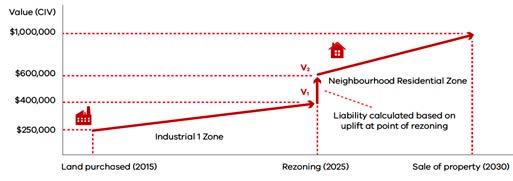
g) a rezoning of land that, immediately before the rezoning, was in a zone declared under subsection (2)(b).
It is worth noting that a number of these Excluded Rezonings carve out land to which GAIC applies, thereby avoiding a double-dipping.
WGT is calculated by reference to the difference in the capital improved value (CIV) of the land with and without the rezoning, both as at 1 January preceding the rezoning.
The Valuer General Victoria will be responsible for determining the value of land before and after a rezoning.
It remains unclear as to how valuers, and the Valuer General Victoria, will grapple with calculating a change in land value attributable solely to a rezoning but as at the date before the rezoning. Planning Scheme Amendments are generally foreshadowed and processed over long time periods. It is unclear how changes in the market over the processing time of the amendment will impact upon value which is attributed to the uplift in the with and without rezoning scenarios. In terms of the WGT liabilities, for a rezoning of land that results in a value uplift:
• of more than $100,000 but less than $500,000, the tax will apply to marginal rate of 62.5% on the uplift above $100,000.
• of $500,000 or more, a tax rate of 50% will apply to the total uplift.6
In determining the value uplift of land, all land owned by the person or groups of companies and/or trusts and subject to that rezoning will be taken into account.
The WGT Act provides a number of exemptions:
(a) residential land up to 2 hectares;7
(b) rezonings which seek to correct obvious or technical errors in planning provisions or the planning scheme;8
(c) land which is subject to a contract of sale or option before 15 May 2021 and where settlement has not occurred before the windfall gains tax event;9

(d) rezonings underway before 15 May 2021:10
(i) this requires registration of the amendment tracking system before 15 May 2021; or
(ii) before 15 May 2021 the owner of the land—
(A) approached the Council to request the rezoning; and
(B) paid for, was liable to pay for, or had otherwise performed or procured relevant work in relation to the rezoning; or
(C) the total value of relevant work and relevant costs was not less than the threshold amount .11

(e) charities and university land (in certain circumstances only);12
(f) land rezoned to a rural zone. 13
The Landowner will be liable to pay the WGT.14 The liability can be deferred, either partially or in full, until the next dutiable event (or relevant acquisition in a landholding company or trust) occurs, or thirty years after the rezoning event, whichever occurs first.
Interest will accrue over the deferral period at the 10-year Victorian Treasury bond rate. Once deferral ceases, full payment must be made within thirty days.15
1 Hon Daniel Andrews press release 12 October 2021: https://www.premier. vic.gov.au/windfall-gains-tax-benefit-victorian-community
2 Victorian Budget 2023-24 Statement of Finances.
3 Windfall Gains Tax and State Taxation and Other Acts Further Amendment Act 2021 (Vic) section 3.
4 Windfall Gains Tax and State Taxation and Other Acts Further Amendment Act 2021 (Vic) section 3.
5 Excluded Rezoning being defined in the Windfall Gains Tax and State Taxation and Other Acts Further Amendment Act 2021 (Vic).
6 Windfall Gains Tax and State Taxation and Other Acts Further Amendment Act 2021 (Vic) section 9.
7 Windfall Gains Tax and State Taxation and Other Acts Further Amendment Act 2021 (Vic) section 37
8 Windfall Gains Tax and State Taxation and Other Acts Further Amendment Act 2021 (Vic) section 38.
9 Windfall Gains Tax and State Taxation and Other Acts Further Amendment Act 2021 (Vic) section 39
10 Windfall Gains Tax and State Taxation and Other Acts Further Amendment Act 2021 (Vic) section 40
11 Threshold amount being defined as: (a) 1% of the capital improved value of the land immediately before the WGT event; or (b) $100 000.
12 Windfall Gains Tax and State Taxation and Other Acts Further Amendment Act 2021 (Vic) section 41.
13 Pursuant to the declaration made by the Treasurer of Victoria, Tim Pallas MP on 20 May 2022 under section 3(2) of the Windfall Gains Tax and State Taxation and Other Acts Further Amendment Act 2021 (Vic).
14 Windfall Gains Tax and State Taxation and Other Acts Further Amendment Act 2021 (Vic) section 8.
15 Windfall Gains Tax and State Taxation and Other Acts Further Amendment Act 2021 (Vic) section 32.
Urban Planning Collective (UPco) is a specialist statutory planning collective based in Melbourne. Over the years, we’ve become known and respected for our balanced, collaborative approach to town planning, and our deep knowledge of Victoria’s development landscape.
The planning system isn’t becoming any less complex. But, by working as our clients’ guide, translator, adviser and advocate, we help our clients achieve outcomes we can all be proud of.
upco.com.au
Proud to be helping define Victoria’s future.Source: Department of Treasury and Finance Factsheet – Windfall Gains Tax
There have been many amendments to Clause 52.06 since the major review in 2012, but none of these have addressed the dimensions of parking bays.

The VPPs have traditionally adopted dimensions varied from those used in NSW which became enshrined in the Australian Standard 2890.1:2004 – Off Street Car Parking, which was produced without a representative from Victoria!
The major difference between the Planning Scheme dimensions and the Australian Standard is the length of parking bays and the access aisle.
The Planning Scheme has a minimum bay length of 4.9m with an aisle width of 6.4m (based on a 2.6m wide space). The Australian Standard has different dimensions for different user classes, but the most relevant are short term parking (5.4m long bay with a 5.8m aisle) and high turnover (shopping centre) parking (5.4m long bay with a 6.6m aisle).
Henry Turnbull, Consultant, Traffix GroupThe table below shows the most sold cars in April 2023 in order of popularity as well as the standard design vehicles, and their associated dimensions.
Clearly, the length of the most popular cars exceeds 4.9m and while linemarking a shorter space encourages motorists to minimise any overhang into aisle, longer vehicles cannot help but overhang.
For example, if two Ford Rangers were parked opposite each other and fully into a standard Planning Scheme bay, the effective aisle width would be reduced to only 5.4 metres which would severely affect the ability to park in adjacent bays.

It is significant to note that the major supermarket chains generally require longer spaces and a wider aisle than set out in the Planning Scheme.
The Planning Scheme sets out minimum dimensions, but unfortunately, these tend to be adopted as a standard universally, often leading to a poor design outcome.
I understand that the Australian Standard is being reviewed later this year and will possibly include an update to the size of standard design vehicles. Any increase to the standard vehicle dimensions should lead to a review of parking bay dimensions in Victoria.
Henry Turnbull is Principal Consultant at Traffix Group and a former President of VPELA.

If we’re not moving forward, we’re going backwards. After over 20 years working as a town planner in Victoria, I can’t help but think that is what we have been doing … going backwards.
Recent articles in The Age and rumblings from the Victorian Labor Government suggest that the new Planning Minister, Sonia Kilkenny, is aiming to address the state’s impending housing crisis by undertaking significant planning reform and refocusing on housing growth and infrastructure to service rich middle ring suburbs.

While there has been some tinkering with the Planning Schemes and the Planning and Environment Act 1987 to minimise conflicting policies and repeating objectives, very little else has changed for decades in terms of real reforms or improvements. I am left feeling very old when I recall the shift from the Good Design Guide to ResCode and am reminded that this took place over 20 years ago.
Even the Residential Zones reform wasn’t considered revolutionary. Ratio Consultants certainly vocalised its views on the haphazard application of the new zones and many still question whether these were an improvement or just more tinkering given the liberal application of the restrictive Neighbourhood Residential Zone (NRZ). It comes as no surprise to many that the areas where the NRZ was most liberally applied, such as Bayside and Boroondara, have seen a disproportionate increase in property values in the past decade.
Minister Kilkenny has recognised that the government had failed to meet its own target of directing 70% of housing growth to established areas, with only 56% of new dwellings since 2014 being located within established areas.
There is a very real and sensible reason why middle ring suburbs need to lift their game to provide for additional housing. Middle ring suburbs are the areas that lie between the inner city and the outer suburbs, where many people would like to live. They are often characterised by good infrastructure, access to services, retail amenities and education facilities. However, they are also facing a shortage of housing which drives up prices, making it difficult for young families and low-income earners to reside within these established areas.
The lack of additional housing in these areas is also pushing additional housing further out to our ever-expanding Urban Growth Boundary, which is generally a long way from where people work, and has limited services and public transport. This sprawl is directly at odds with what planning policy has been trying to achieve for decades.
Sam D’Amico, Director of Ratio Consultants
So, what do we do about it? In my opinion, the Victorian Government needs to be brave and focus on improving the planning system for the betterment of the State. The Government needs to focus on streamlining planning regulations, provide incentives for developers to build medium-density housing, and increase public awareness of the benefits this type of development delivers. This could include initiatives such as fast-tracked planning permits, reduced development fees, and public education campaigns.
At a high level, some changes I’d propose to improve the Victorian Planning System could include, but are not limited to:
As a town planner who has worked in both local government and the private sector, I believe that the single most significant improvement to the planning system would be to centralise decision making in planning and dilute the influence of local politics.
It is an almost impossible task to ask local government, who are beholden to small but active community groups to implement and deliver on State housing policies and targets. I would suggest a centralised planning authority, perhaps a body like the Victorian Planning Authority (VPA), should be responsible for development in and around strategic areas, such as activity centres and key public transport nodes like train stations.
The next phase would be the planning application. Too often an application goes through an extensive process ‒ pre-application meetings, requests for further information (RFI), a response to the RFI, advertising, community consult meetings, further amendments, and ultimate planning officer support endorsed by other council departments ‒ only to be refused by councillors.
I’m a big advocate of the City of Merri-bek’s trialled Urban Design Scorecard which sought to streamline the planning application process by ensuring that high-quality designed projects which provided a clear and genuine community benefit, would go through a different application pathway. An application that qualified for the process would have pre-application meetings with Council Officers who would issue a decision on the application, rather than local Councillors. The benefit of the scorecard approach is that applications for genuinely excellent developments, regardless of the number of objections, would be assessed on its planning merits and the principles of net community benefit, rather than political grandstanding.
To take it a step further, perhaps third-party appeal rights should be removed from these strategic priority areas. I’m not suggesting that the community should not be consulted ‒ I think they should. However, in a highly appropriate strategic location where substantial change is encouraged, why do we let an individual hold up an application for two, ten or a hundred or more dwellings when a responsible authority has deemed it acceptable?
I’ve never understood why there is no right to review in the Planning Scheme Amendment process if the Council decides to abandon an applicant-driven amendment.
It’s not uncommon for an amendment to be abandoned by Councillors due to a significant number of submissions being made, despite there being sound planning merit of the amendment. My suggestion would be that amendments should be submitted directly to the Department of Transport and Planning (DTP) or Planning Panels Victoria (PPV) to determine whether they should proceed to a Panel.
Alternatively, in the event Council decides to abandon the amendment, an applicant should have the ability to have their matter heard by PPV and the Minister who would ultimately determine whether the amendment has merit.
Imagine the time savings for Councils if applicants didn’t need to call Council Officers to see if a planning application has been referred out, obtain comments and copies of objections received?
Imagine the transparency for the public if application materials were left online from the time of notice until the decision is made?
Implementing a consistent online system used by all the Victorian Councils could allow applications to be submitted and paid for, as well as enabling real-time access to applications. I understand that this is currently part of the planning reform process being undertaken by the Department so I look forward to watching this uncontroversial reform rolled out ASAP.
My last suggestion for the purpose of this piece is to suggest the removal of mandatory garden areas in General Residential zoned land. I wrote an article for the VPELA Revue when the garden area was proposed stating that the mandatory nature of the control was lazy. Nothing I have seen since its establishment has changed my opinion.
The above suggestions merely touch on a wealth of potential improvements that could be made to our planning system to ensure faster, more efficient decision-making resulting in net community benefit. I’m sure anyone who works in our system will have additional ideas and suggestions that build on these recommendations.
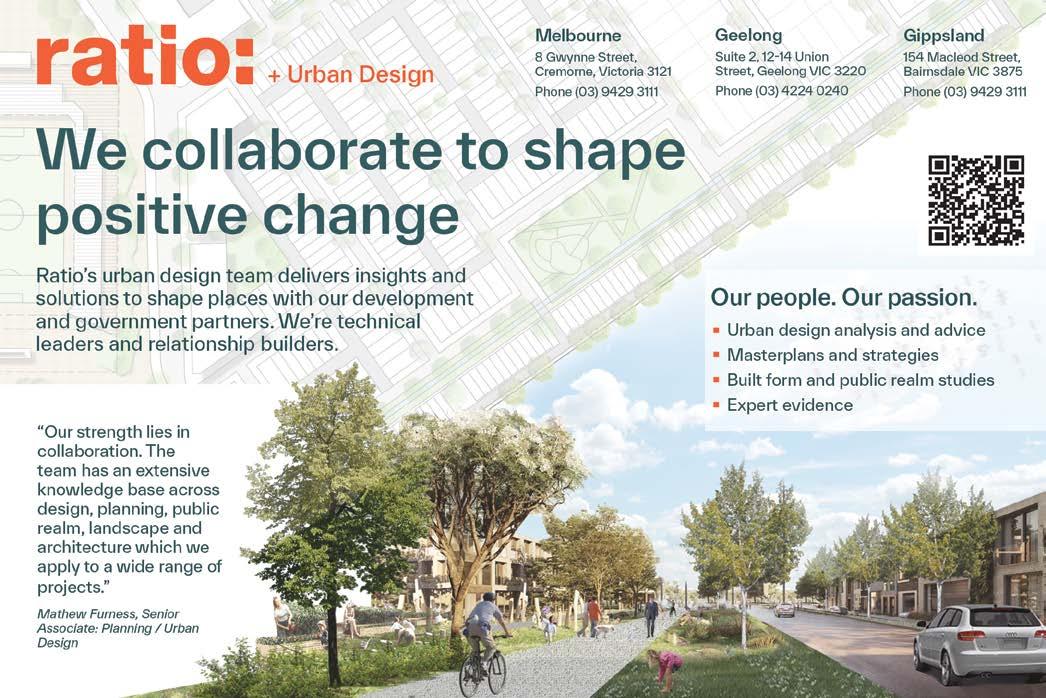
Certainly, all planning practitioners I have spoken to agree that now is the right time for significant planning reform in Victoria. The Victorian Government must prioritise the promotion of mediumdensity development in middle ring suburbs as a key component of its planning reform and needs to implement improvements to streamline this focus to address the housing crisis, promote sustainable development, and create more diverse and vibrant communities across the state.
Sam D’Amico has over 20 years’ experience as a town planner both in local government and private practice.
My last article was quite prophetic as it was published two weeks before the Government announced its 70/30 mandate.
Not many people get to the back of the VPELA magazine, particularly after looking at all the social photos. But I would urge you, if you didn’t make it to my last article, to go back to the previous edition and read it, as it addresses all the topics to help solve the supply and affordability housing crisis.
It should be properly acknowledged that the development industry supports infill development and higher density. It is critical, however, that this not be pursued at the expense of greenfield development. People should be able to choose where they wish to live.
The 70/30 mandate has merit but cannot be achieved unless there is dramatic reform to the neighbourhod character overlays (NCOs) which are the main inhibitor to absorbing growth in our existing infrastructure and suburbs.
Our population forecasts are enormous with 400,000 immigrants last year, coming back to 350,000-odd this year and 260,000 a year ongoing. These numbers are dramatically higher than we have experienced over the last two decades and will place a serious strain on the capacity of the industry to deliver houses.
Rory Costelloe, Executive Director, Villawood Properties


The Federal Government appears to be addicted to immigration as a source of propping up the GDP. Whilst we need the skilled workers much of it is basically importing money for our balance of trade, as we barely manufacture anything anymore and export mainly unprocessed minerals.
The Government has admirable ambitions to provide affordable housing and social housing with its Big Build but affordability could be largely restored by unwinding the NCOs and bringing back off-theplan stamp duty exemptions for Australian buyers to create supply opportunities.
I wrote the last article a month or two ahead of publication and postwriting, Porter Davis and myriad other builders have collapsed due to the onslaught of supplying a record number of houses at prices where costs exceed the fixed-price contracts.
The cost of construction simply exceeded the sale price of a fixed price contract. Only builders with large cash reserves can push through this, and we are not out of the woods yet. Many other builders will remain in a precarious situation for the rest of 2023, trying to deliver the same contracts.
The attached graphs show the dramatic increase of Metro Melbourne land sales in 2021. Sales are then time lagged 18 months later to
The rapid rush in land house sales in 20/21 was prompted by low interest rates, the RBA prediction of no new rate rises until 2024, the Home Builder Grant, FHBG and Stamp Duty exceptions.
The frenzy of buyer demand led to a record increase in construction costs which has exceeded the fixed price contract value of the sold house just when the peak of housing starts began in 22/23. Consequently, many builders went under and many others continue to struggle.
The 11 interest rates rises have now virtually stopped land sales with only 6-7000 sales projected for 2023, meaning there will only be 6,000-7,000 new housing starts available for construction in 24/25 when titles become available at a time when we have a critical housing shortage with record immigration intake.
The rapid rush in land house sales in 20/21 was prompted by low interest rates, the RBA prediction of no new rate rises until 2024, the Home Builder Grant, FHBG and Stamp Duty exceptions. The frenzy of buyer demand led to a record increase in construction costs which has exceeded the fixed price contract value of the sold house just when the peak of housing starts began in 22/23. Consequently, many builders went under and many others continue to struggle. The 12 interest rates rises have now virtually stopped land sales with only 6-7000 sales projected for 2023, meaning there will only be 6,000-7,000 new housing starts available for construction in 24/25 when titles become available at a time when we have a critical housing shortage with record immigration intake. The whole construction industry is now suffering the same collision of price rises at peak demand making many projects unviable. The gouging of prices must be reset, as it's destroying the industry that feeds it! No further interest rate rises are warranted as the lag effect of the industry slowdown and end of 1.89% fixed interest rates has not been fully felt yet.
The whole construction industry is now suffering the same collision of price rises at peak demand making many projects unviable The gouging of prices must be reset, as it’s destroying the industry that feeds it! No further interest rate rises are warranted as the lag effect of the industry slowdown and end of 1.89% fixed interest rates has not been fully felt yet.
predict when Builders will start construction after record land titles are delivered in 2022/23.
Builders were faced with the task of delivering twice as many houses as they’d ever done in their history with an exorbitant increase in prices over the same period, which has unfortunately made many businesses, caught in the cost trap, unviable.
The next problem looming is that 12 interest rate rises has prompted a severe drop in current land sales to only 6000 lots in 2023, which will create a critical shortage of titles for house starts in 2024/25 at a time of record immigration.
Another ambition of 70/30 is to achieve growth within the existing inner-urban imprint, suggesting all new development will be through townhouses or apartments. This means our future population will all be forced into apartment living rather than traditional suburban living.
Anecdotally, we know that many Asian immigrants are happy to live in more apartment/townhouse-style living but the evidence is that with a very large proportion of immigrants, from the Asian Subcontinent, their aspiration in life is to have a detached house and two children. And they don’t care how far they drive to achieve that dream.
This is evidenced by the fact that, while immigration figures might suggest one-third are from the Subcontinent, in many growth corridor greenfield areas this translates to 70 per cent of buyers are from the Subcontinent.
We are presently facing a shortage of 48,000 dwellings by 2025 – that is, 28,000 houses, 20,000 units. We have single persons already locked out of buying an inner-suburban house because of rising prices.
Greenfield growth is driven by lack of inner supply and the desire for space. The purchase price of a greenfield house and land package is only 65 per cent of the average Melbourne house price. Since 70 to 80 per cent of housing supply has been in growth areas, does this mean that mandating 70 per cent inner growth will force home buyers to pay 50 per cent more for a home in line with average Melbourne prices?
There is no doubt a hard boundary will drive prices toward those found in Sydney. We will no longer be the most liveable city. Investment will also be directed to other States where it is easier to develop and more affordable. For instance, we have recently just purchased 5000 lots in South Australia.
Metropolitan Melbourne’s major infill precincts themselves have very significant infrastructure constraints which are at odds with the 70/30 notion of capitalising on existing infrastructure, viz:
- Fishermans Bend – drainage, contamination, tram and rail extensions
- Arden – significant drainage problems
- Former defence site in Maribyrnong – significant contamination problems – low yield scenario
All require massive investment in infrastructure by government. Existing infrastructure is ageing and simply does not have the capacity to support endless growth.
It’s instructive to look at South Australia. The SA 30-Year Plan of 2010 was targeted at a 70 per cent infill proportion. Between 2015 and now, however, it has become much more balanced and closer to 50/50. The SA State Government is now zoning significant greenfield sites to bring supply on to battle affordability.
The 70/30 is an aspiration for metropolitan Melbourne but is certainly not practical for regional Victoria. A third of Victoria’s growth in the last five years was in regional areas and 70/30 will bring this to a halt.
Planning policy has promoted decentralisation to the regions for the last 30 years. Now that is finally happening, and is a viable alternative, this directive is threatening the continued success of the regions.
The infrastructure context is significantly different in the regional centres. For example, Shepparton has drainage constraints in the existing urban areas, and growth areas are properly designed and are not subject to flooding.
Ballarat has road capacity in the west and north-west and needs population growth to support its CBD – rates of infill development are extremely low.
Bendigo, meanwhile, is severely restrained in established areas due to bushfire and endangered species risk.
At Geelong, there are many infrastructure advantages with new growth corridors adjacent to the existing Geelong bypass.
These regional Cities have far more capacity to deliver in Growth areas with existing transport/education/health infrastructure than Melbourne, and should be encouraged to do so!
Rory Costello, Executive Director, Villawood PropertiesSo, true to our word, back for its second iteration…your favourite guilty reading pleasure (or perhaps professional saviour). We’ve had a while between issues to wrack our collective brains here at the YPG, but if you missed the first golden YPG edition of the Revue (June 2022) here’s the low-down on how this works…
Ever felt like you should know something, but don’t ask for fear that it’s a “dumb question”? Ever felt the sensation of a question burning in the back of your mind, your thirst for an answer endlessly unquenched? Even after 20 years in the industry, and now in the senior ranks, maybe you are still reeling that you’ve missed your chance to ask anyone above you…
Well, fear not! This column is here to save the day! The YPG are here to offer our readers the chance to get it off their collective chest and… “ask for a friend”. Coupled with the anonymity to solve your *ahem* friend’s predicament with professional discretion, read on to find out the answer you’ve been searching for!
Inspired by the infamous (yet universally intriguing) Dolly Doctor and other similar Q & A magazine columns, “Asking for a friend…” is set to be a regular contribution of the VPELA YPG Committee. Got a question… for a friend? Send it on through to ypgquestions@gmail.com!

P.S. Contributor identities will be kept confidential – your “friend’s” secret is safe with us!
A ‘UDF’ as it is colloquially known, stands for “Urban Design Framework”. These are often required by a Structure Plan, and essentially provides a greater level of detail and control of a particular area. UDF’s help to lay out the urban form, movement pathways (for pedestrians, cars, bikes, etc.), how tall things should be, whether they’ll be spaced out or densely packed, where the open space might go and what qualities it might have…
A ‘DP’ stands for “development plan”. Unlike other documents, it usually focusses on a specific piece of land or site and applies to one holistic ‘development’. A DP is required through the Development Plan Overlay, where the relevant schedule specifies all requirements for the document. It might include a high level concept plan for the DP to be generally in accordance with, requirements for supporting documents like transport impact assessments or affordable housing strategies, and any overarching objectives for the specific land and future development. The level of detail in a DP can also vary significantly, from a one-page map (don’t see many of these anymore) to a weighty document with many supporting documents. Once a DP is approved, any planning permit application which is generally in accordance with it is not subject to the third party notice and appeal rights.
Both of these overlays (Special Building Overlay and Land Subject to Inundation Overlay) relate to flooding. Both seek to manage the risk of building on potentially flood-affected land, or land which may experience overland flow. They might do this by restricting the part of the land that might be built upon, prescribing minimum floor levels,
mandating construction types that allow water to move unobstructed through the land, or a range of other mechanisms. Ultimately the main difference between them is their application: the SBO kicks in when you want to undertake works on a part of the land actually affected by the SBO; whereas the LSIO triggers a permit regardless of where your buildings and works are on the land.
Typically, if you have a sloping site and there is the option, it is best to orient vehicle access at the lowest point of the site. Say, for example, you needed to include a partial basement in your proposed development. If you were to approach from the highest point, you’d have to build a ramp and tunnel a long way under the ground floor in order to create a basement. Whereas if you start at the lowest point, this means that you minimise the amount of excavation required to achieve the same amount of car parking area, avoid losing space to a giant ramp, and save substantial cost, time and concrete.
Developers can sometimes get a bad rap; however they play a pivotal role in the development industry to deliver a significant portion of all projects. In most instances, developers will purchase land, engage a project team full of architects, planners, engineers, landscape architects and others as required to develop a concept for the site, obtain planning approval and then building approval, build the project and then sell it to the market. They can range from small operations to companies of significant scale, and cover the full breadth of projects from residential to industrial and everything in between.
• What is the zoning and what kinds of uses are permissible with/ without the need for a permit?
• Are there any overlays and what do they mean?
• How high can the building be?
• How much of the land can be built on (i.e. developable footprint) and are there any setback requirements to be mindful of?
• How much floor area (often referred to as “NLA” or ‘Net Leasable Area’) can be achieved?
• How much car parking would be needed (for a proposed use/ development) and would this be achievable?
• Is there any opportunity to reduce the car parking requirement/ seek a waiver?
• Are there any trees on the land, and do I need a permit to remove them?
• Are there any existing vehicle access points (crossovers), and would there be any opportunity to change them or add more?
• What other approvals/recent developments are occurring around the Site that could be relevant?
• Are there any amendments or changes soon to be introduced that could change the planning controls or policy?
The EPBC Act is the “Environment Protection and Biodiversity Conservation Act 1999,” which comprises the national legal framework for the protection and management of ‘matters of national environmental significance’ or “MNES”. There are nine (9) MNES:
• world heritage properties

• national heritage places
• wetlands of international importance (being ‘Ramsar’ wetlands after the international treaty under which such wetlands are listed)
• nationally threatened species and ecological communities
• migratory species
• Commonwealth marine areas
• the Great Barrier Reef Marine Park
• nuclear actions (including uranium mining)
• a water resource, in relation to coal seam gas development and large coal mining development.
If a proposal will, or is likely to, have a significant impact upon MNES, it may be defined as a ‘controlled action’ under the EPBC Act. Proponents are required to refer a ‘controlled action’ to the Commonwealth Department of Climate Change, Energy, the Environment and Water (DCCEEW) for assessment to enable it to decide whether to grant approval for the action.
Despite operating independently of the Victorian Planning and Environment Act 1987 (PE Act), there are many instances where approval for the proposed use and/or development will be required under both the PE Act and the EPBC Act. In this respect, if a proposal comprises a ‘controlled action’ and the DCCEEW refuses to grant approval for the action under the EPBC Act, this may be highly relevant to a responsible authority’s decision whether or not grant a planning permit.
An ‘EES’ stands for “Environment Effects Statement”. An EES is a form of environmental assessment which the Minister may decide is required where a project has the potential to have a significant impact on the environment. The term ‘environment’ in the context of an EES is defined broadly, and may include ecological, physical, human and economic systems, as relevant. As such, large infrastructure projects invariably result in a number of apparent impacts on the environment, triggering the need for a more significant assessment like an EES.
Following the referral of a project to the Minister for Planning, the Minister may decide that an EES is required to enable a proper assessment of the environmental impacts of that project. Once the EES has been scoped, the EES is then prepared and released for exhibition. Once submissions have been received, the Minister then appoints an Inquiry and Advisory Committee (IAC) to hear submissions and evidence, with many of these hearing running for a number of weeks. Following the hearing, the IAC prepared a report which is then submitted to the Minister for approval. Following assessment under an EES, if a project is deemed to be acceptable, subject to any requirements or amendments, a planning scheme amendment is then prepared and gazetted to facilitate that project via controls such as the Special Controls Overlay and any incorporated documents.
In short, a whole range of things.
The Comprehensive Development Zone (CDZ) is contained in clause 37.02 of the Victoria Planning Provisions. A purpose of the CDZ is to provide for a range of uses and the development of land in accordance with a comprehensive development plan (CDP) which has been incorporated into a planning scheme.
A CDP comprises a long-term plan for urban development which identifies how land is required to be used and developed over time, and which provides (unsurprisingly) comprehensive controls for the residential and commercial use and development of larger sites.
A schedule to the CDZ provides for a number of requirements relating to the use, development and subdivision of land which is the subject of a CDP. Just like a DP or a precinct structure plan (PSP), the use, development and subdivision land in the CDZ must be ‘generally in accordance’ with the CDP, subject to any of the additional requirements contained in a CDZ schedule.
For previous questions including: “What is a PPF translation?”, “How do I address a VCAT member in a hearing?”, “What is the difference between mandatory and discretionary?”, and “How does a shuffle stacker system work?”, feel free to head back to the June 2022 Edition of the Revue for these pearls of wisdom and more.
And if we haven’t answered the question that’s been burning a hole in your mind – let us know! Send your question to ypgquestions@gmail. com and we’ll do our best to scratch that metaphorical itch next time round. ‘Til then, stay curious! – YPG



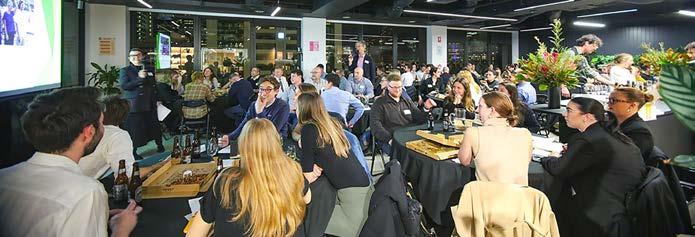
Established in 1989, the Association holds regular seminars, social events and a conference annually. It also reviews legislation, provides high level advice to Government and makes submissions to all aspects of land use planning. If you have any questions or are interested in joining the Association, contact Anna Aughterson, Executive Officer – admin@vpela.org.au





